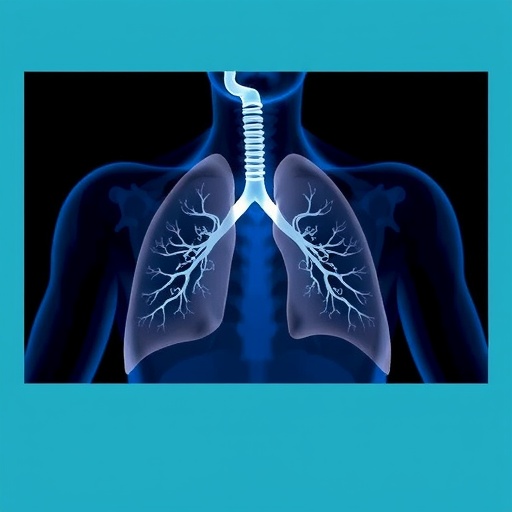As neonatal care continues to evolve, one of the most critical and complex aspects of treatment remains the management of respiratory support for the tiniest and most vulnerable patients. Mechanical ventilation, a lifesaving intervention for neonates with compromised lung function, has been instrumental in reducing mortality and morbidity in neonatal intensive care units (NICUs) worldwide. However, its application is not without challenges, particularly when it comes to optimizing lung recruitment—the process of reopening collapsed alveoli to improve gas exchange while minimizing lung injury. Recent studies question whether neonatologists and respiratory specialists are truly ready to consider lung recruitability as a fundamental element in tailoring mechanical ventilation strategies for these patients.
The concept of lung recruitability hinges upon the variability of lung tissue response to positive end-expiratory pressure (PEEP) and other ventilation settings that influence alveolar recruitment and derecruitment dynamics. Unlike adult patients or older children, neonates exhibit unique physiological characteristics, such as compliant chest walls and immature lung architecture, which affect how their lungs respond to mechanical ventilation. The heterogeneity of lung disease in neonates adds layers of complexity, from surfactant deficiency in preterm infants to inflammatory or infectious injuries seen in full-term neonates. Therefore, understanding which neonates might benefit from recruitment maneuvers is critical, yet the clinical evidence remains nascent and controversial.
Mechanical ventilation aims to maintain adequate oxygenation and carbon dioxide elimination by delivering precise volumes and pressures to the lungs. Despite advances in ventilator technology, the risk of ventilator-induced lung injury (VILI) persists, especially in fragile neonatal lungs. VILI often arises due to overdistension or repetitive opening and closing of alveoli, leading to inflammation, edema, and long-term pulmonary sequelae such as bronchopulmonary dysplasia (BPD). Lung recruitment maneuvers, theoretically, are designed to open collapsed lung units and maintain their patency, reducing shear stress and preventing atelectrauma. However, improper recruitment or excessive pressures may exacerbate injury, underscoring the imperative for careful patient-specific evaluation.
Recent clinical trials and animal models have advanced our understanding of lung recruitability, yet translating these insights into bedside interventions remains challenging. Various modalities—including pressure-volume curve analysis, electrical impedance tomography (EIT), and lung ultrasound—have been explored to assess recruitability dynamically in neonates. These techniques aim to identify the “recruitable lung,” allowing clinicians to tailor PEEP and tidal volume settings to optimize lung mechanics and gas exchange. Nevertheless, these assessments require specialized equipment and expertise, limits that curtail widespread adoption in many NICUs.
A burgeoning area of research investigates biomarkers and genetic predispositions that may influence lung recruitability and response to mechanical ventilation. Understanding the molecular pathways governing lung injury and repair in neonates could pave the way for individualized ventilatory strategies. Advances in personalized medicine could one day enable clinicians to predict recruitability and ventilation tolerance, thereby minimizing iatrogenic injury and improving long-term respiratory outcomes.
Critically, the timing and extent of recruitment maneuvers also demand scrutiny. Initiating recruitment too aggressively or too late in the course of respiratory failure may yield contrary effects, risking hemodynamic compromise or volutrauma. Furthermore, neonates with heterogeneous lung pathology may present regional differences in recruitability, posing challenges for global ventilation settings. Emerging evidence suggests a balance must be struck between lung mechanics, oxygenation parameters, and cardiovascular stability to optimize recruitment safely.
Advancements in computational modeling and machine learning offer promising avenues to integrate multimodal data and predict recruitability in neonates. By simulating lung mechanics and ventilation responses, these tools could support clinicians in real-time decision-making, reducing reliance on trial-and-error methods. However, validation in diverse neonatal populations and real-world clinical environments remains an ongoing hurdle.
The role of surfactant therapy in modulating lung recruitability is also gaining attention. Surfactant replacement can enhance alveolar stability and compliance, potentially increasing the efficacy of recruitment maneuvers. Yet, its timing relative to ventilation strategies and the interaction with recruitment remain to be elucidated fully. Optimal protocols integrating surfactant and mechanical ventilation tailored to recruitability profiles could significantly advance neonatal respiratory care.
Importantly, collaboration across disciplines—from neonatology and respiratory physiology to biomedical engineering—is essential to propel research forward. Multicenter trials with standardized protocols and robust endpoints are needed to establish evidence-based guidelines for lung recruitment in neonates. Such efforts will require robust funding, data sharing, and attention to ethical considerations, given the vulnerability of the neonatal population.
Family-centered care perspectives must also be integrated into these interventions, as parents and caregivers confront the uncertainty surrounding mechanical ventilation and its risks. Transparent communication about the rationale for recruitment maneuvers, potential benefits, and risks will support shared decision-making and foster trust in the care team.
Despite the promise of lung recruitability as a concept, the neonatal clinical community faces pressing questions: Are we equipped with sufficient tools and knowledge to apply recruitment strategies safely and effectively? What markers reliably identify which neonates will benefit? How can we minimize the risk of harm? Addressing these questions requires sustained scientific inquiry, technological innovation, and clinical vigilance.
In sum, consideration of lung recruitability during neonatal mechanical ventilation represents a frontier with profound implications for patient outcomes. While the theoretical framework is compelling, translating it into practical, personalized treatment protocols remains an aspirational goal. Moving forward, integrating physiological understanding, advanced monitoring, and computational analytics holds the greatest potential to revolutionize how we support breathing in our smallest patients.
As neonatal intensive care units embrace a future of precision respiratory medicine, acknowledging lung recruitability as a key determinant of mechanical ventilation success invites new pathways for innovation. The journey from concept to clinical reality is complex, demanding multidisciplinary collaboration and rigorous scientific validation. By doing so, we can aim not only to save lives but also to safeguard the fragile lungs entrusted to our care, shaping healthier futures for neonates worldwide.
Subject of Research: Lung recruitability during mechanical ventilation in neonates and its implications for optimizing respiratory support.
Article Title: Are we ready to consider lung recruitability during mechanical ventilation of neonates?
Article References:
Becher, T., Miedema, M. & Tingay, D.G. Are we ready to consider lung recruitability during mechanical ventilation of neonates?. Pediatr Res (2025). https://doi.org/10.1038/s41390-025-04332-2
Image Credits: AI Generated




